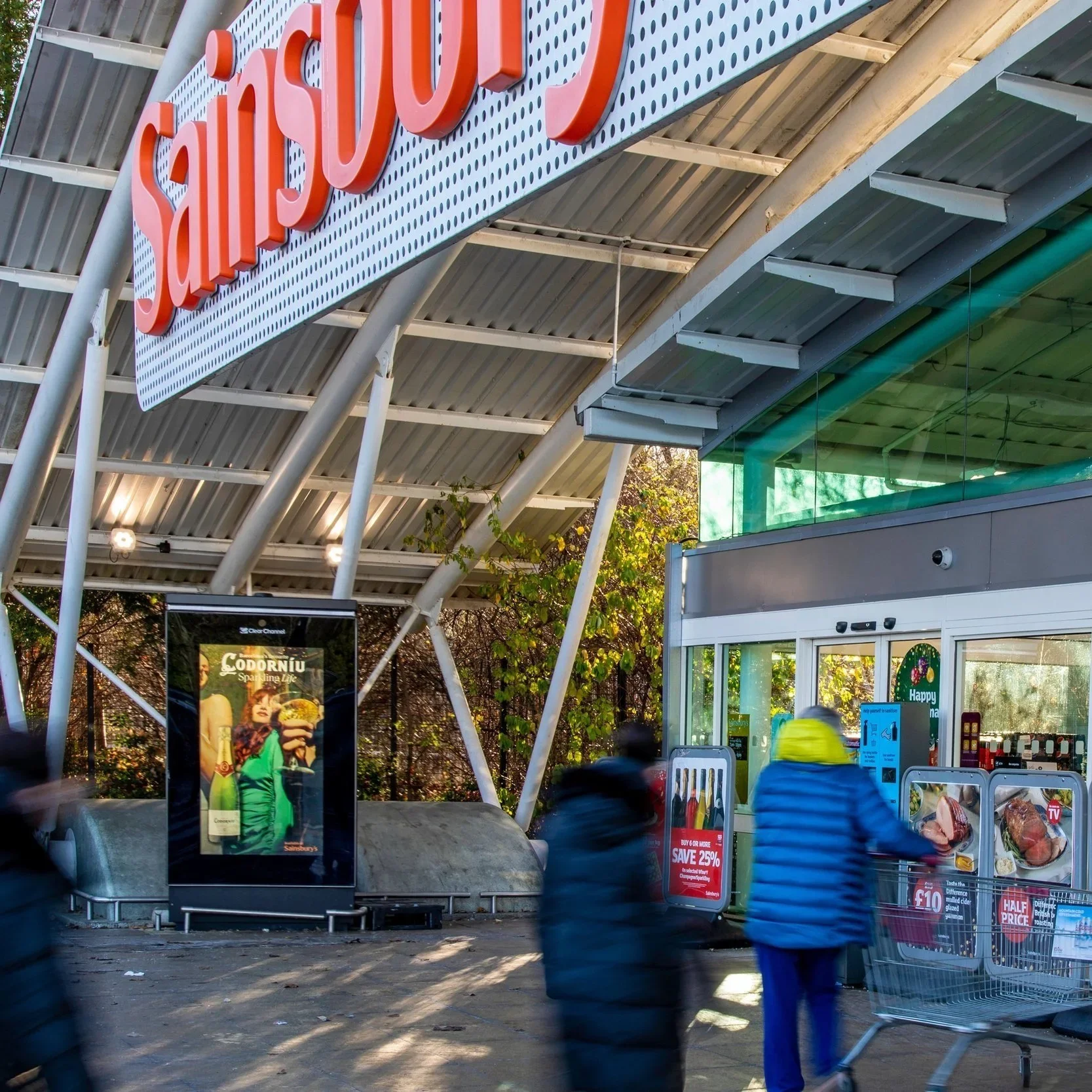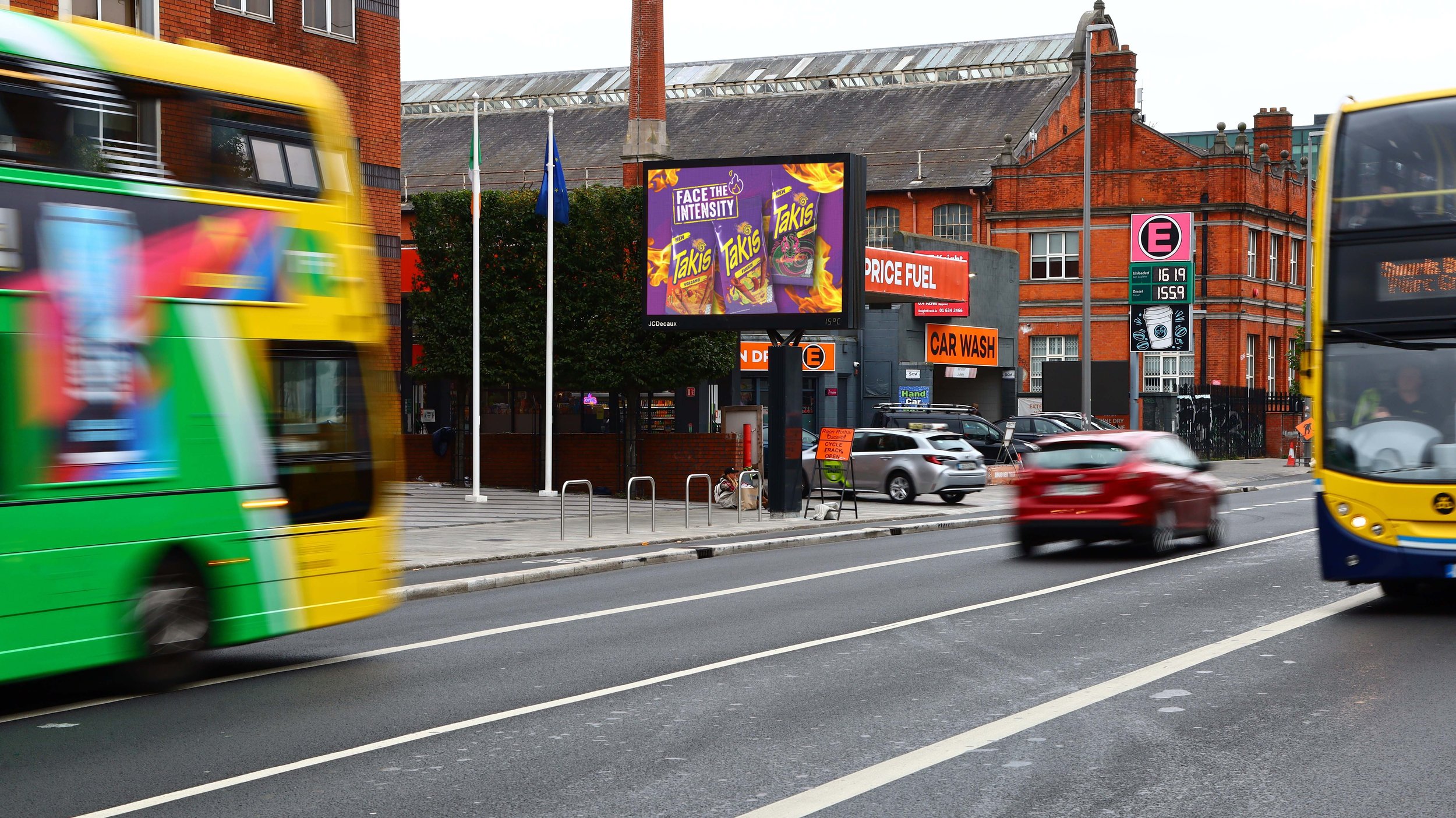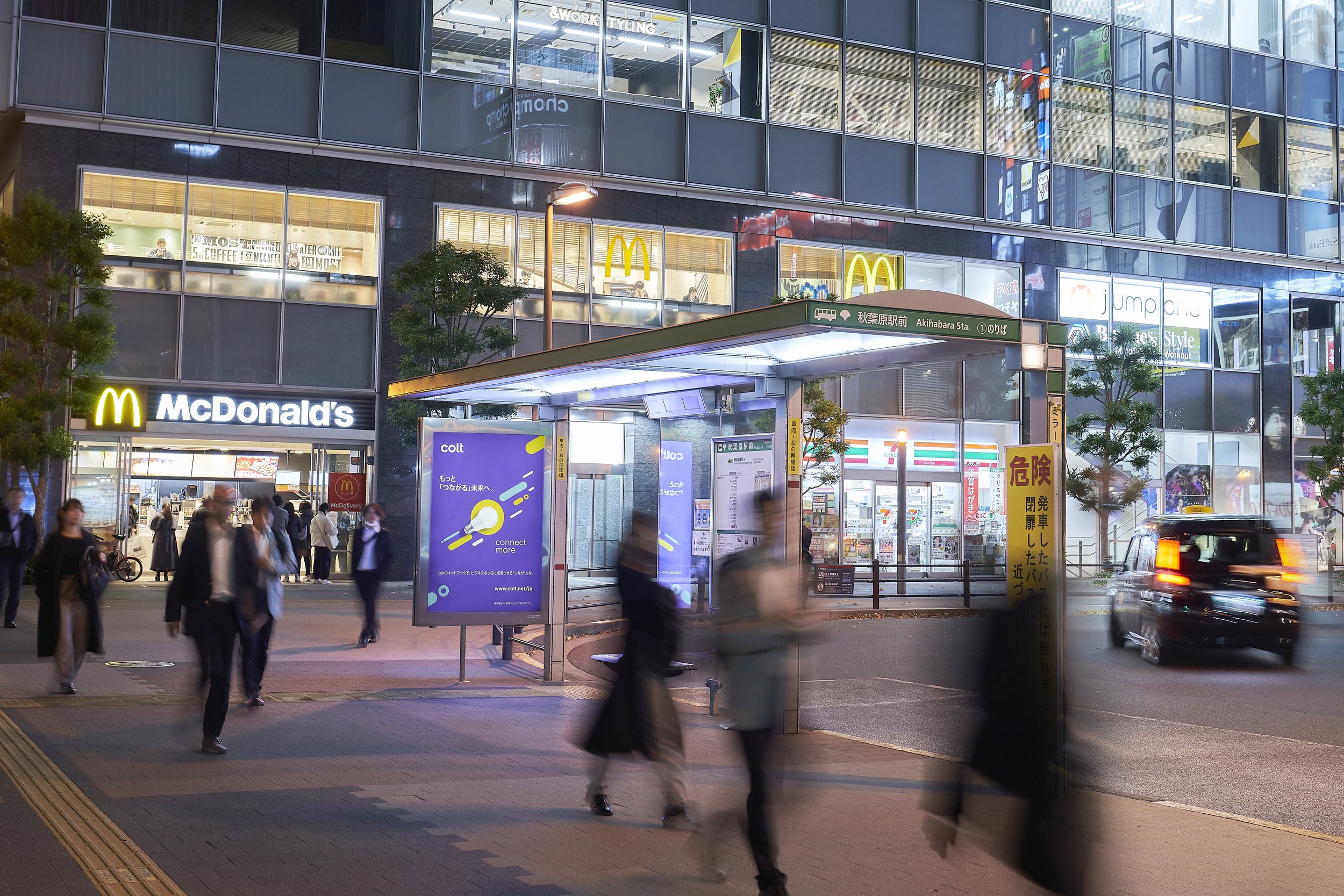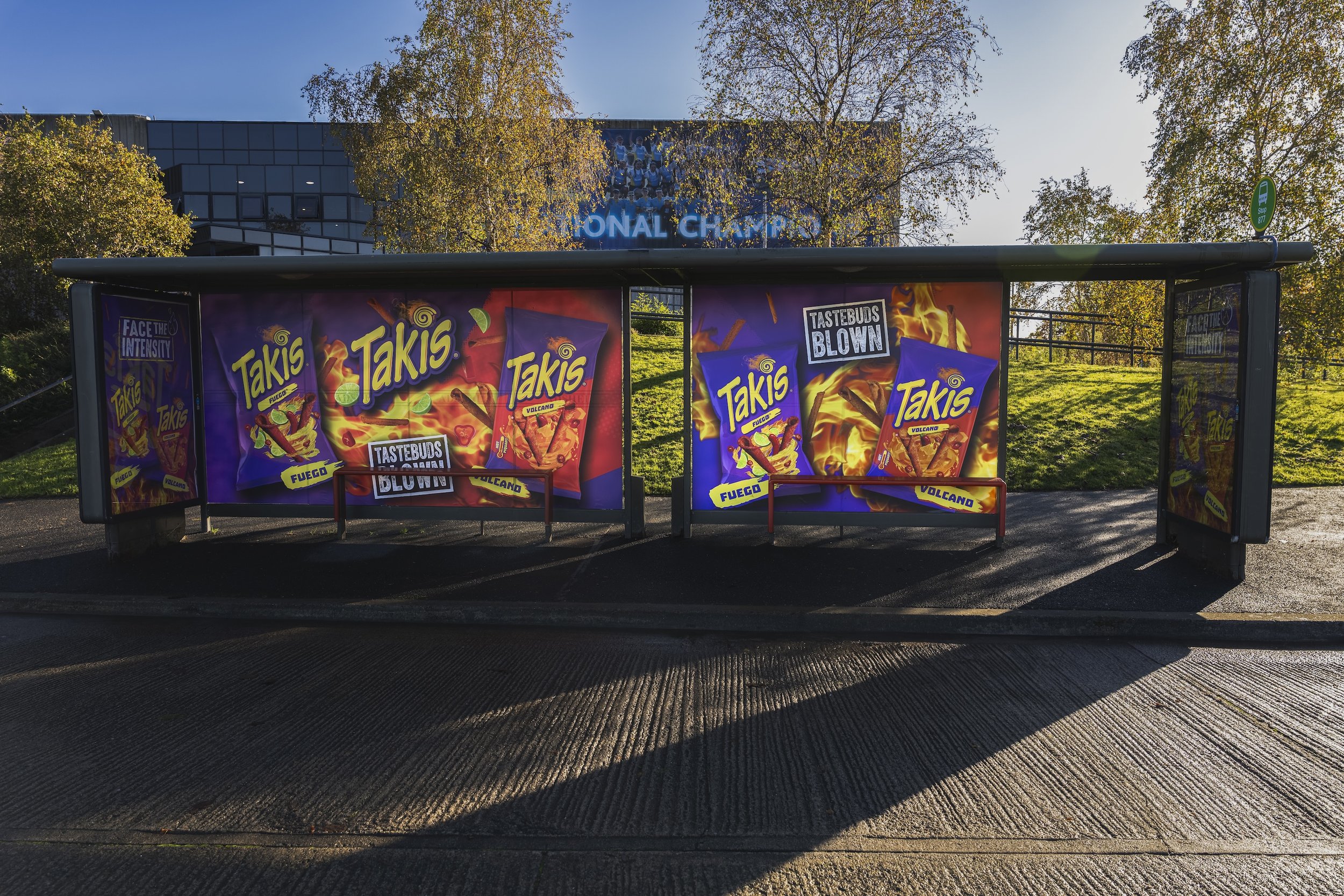How To Advertise in Supermarkets (Tesco, Asda, Sainsbury’s)
How To Advertise in Supermarkets (Tesco, Asda, Sainsbury’s)
Key Takeaways
Start with clear objectives. Understand who you are targeting and what behaviour you want to influence.
Keep it simple. In supermarkets, clarity and visual strength matter more than complexity
Measure and scale. Test locally, learn from data, then expand intelligently with professional support.
Supermarkets remain one of the most powerful advertising environments, where consumers are already in a buying mindset and exposed to consistently high footfall. Whether you are working with a modest local budget or launching region-wide campaigns at chains such as Tesco, Asda and Sainsbury’s, supermarket advertising can deliver measurable impact. In this guide, we explain how to advertise in supermarkets effectively, from choosing the right format and location to measuring performance. We also outline how an integrated agency such as One Day Agency can help you scale successfully.
Introduction
In an age where digital screens dominate daily life, it can be tempting to assume that physical retail environments have lost their importance. Yet supermarkets remain a critical part of the shopper journey. The UK grocery sector continues to thrive, and a significant portion of consumer spending still happens in store.
Unlike other environments, supermarkets allow brands to reach people when they are actively buying. Every aisle represents a moment of decision. Shoppers are already engaged, comparing products and responding to visual cues. This makes supermarket advertising an incredibly effective way to build awareness, encourage trial and influence purchase intent.
Step 1: Define Your Goals and Understand Your Audience
Before beginning any campaign, it is essential to establish a clear objective. Ask yourself:
What do I want to achieve? Brand awareness, product trial, or short-term sales?
Who is my ideal shopper? Families, professionals, or price-sensitive customers?
Which supermarket aligns best with that audience? Tesco, Asda and Sainsbury’s each cater to different profiles and shopping behaviours.
Smaller advertisers might focus on one or two local stores, while national brands can activate campaigns across hundreds of branches. Your objectives could range from increasing visits to a display, driving sales of a hero product, or encouraging redemption of a promotional offer.
Step 2: Choose the Right Supermarket and Advertising Format
The three dominant UK chains offer extensive opportunities for in-store advertising, each with distinct strengths and audience segments.
Tesco
Tesco provides vast reach and a robust retail media network through Tesco Media and Insight, allowing data-driven audience targeting.
Asda
Asda offers competitive pricing and strong brand loyalty, with access to digital advertising through Asda Live, a growing in-store screen network.
Sainsbury’s
Sainsbury’s combines premium positioning with Sainsbury’s Live, its in-store digital platform offering flexible, high-visibility placements.
Popular Advertising Formats
Digital entrance screens welcoming shoppers at entry points
Car park and window panels for brand awareness before customers enter
In-store displays such as trolley panels, shelf edge boards, and floor stickers
Check-out point advertising and digital receipts for direct engagement
Experiential pop-ups and product sampling stands
The choice of format depends on your goals, audience and budget. For example, a brand launch might benefit from wide-scale entrance displays, while a seasonal offer might perform better near tills or on trolleys.
Step 3: The Value of Shopping Cart Advertising
Among the many supermarket advertising options, shopping cart advertising deserves particular attention. It transforms a simple functional object into a moving brand message that follows the shopper through the entire store journey.
This format has been championed by companies such as NEAD Corp, who highlight its effectiveness in reaching consumers during what marketers call the last mile of decision-making. By the time a customer reaches for a trolley, they are minutes away from selecting products, meaning their attention and intent are at their peak.
Advertising on carts or baskets allows continuous exposure from the moment a shopper enters to the point of purchase. Unlike static signage, the message remains with the customer as they move through aisles, reinforcing brand recall and encouraging spontaneous decisions.
Shopping cart panels are also ideal for promoting time-sensitive or value-driven offers, such as “2 for 1” deals or seasonal promotions. They serve both branding and tactical purposes by positioning offers exactly where decisions are made. For marketers looking to balance visibility with cost efficiency, this channel can deliver strong results even with smaller budgets.
Step 4: Plan for Small and Large Budgets
Small Budget Approach
Begin with one store or a small cluster of outlets
Select a single high-impact placement such as a trolley panel or entrance screen
Run a two-week pilot with one clear message and trackable call-to-action
Use simple QR or promo codes to monitor engagement and redemptions
Mid to Large Budget Approach
Expand across multiple stores or entire regions
Combine several formats such as aisle displays, trolley panels and digital screens
Align creative with in-store promotions or nationwide product launches
Use retailer data from Tesco Media and Insight or Sainsbury’s Live to refine targeting
Integrate messaging with online or social advertising for greater reach
Testing creative on a smaller scale first allows brands to refine messaging before committing to a broader rollout. This staggered approach ensures each stage of spend generates insight and measurable outcomes.
Step 5: Creative That Captures Attention
Supermarkets are busy, sensory-rich environments. Your creative must stand out instantly and communicate value in seconds.
Creative Principles
Keep headlines short and bold such as “New in aisle five” or “Limited offer today”
Use high-contrast visuals and consistent brand colours
Focus on a single, clear message rather than multiple ideas
Include a strong call-to-action that drives immediate response
Position copy to reflect physical location such as “Available at checkout”
For digital formats, consider animation or motion to enhance visibility
Remember that shoppers view most in-store ads while moving, often glancing quickly. Simple messaging and striking visuals are more likely to register than complex narratives. For larger campaigns, dynamic creative that changes by time or store data can further enhance engagement.
Step 6: Launch, Track and Optimise
Launch
Coordinate with the supermarket’s media partners to confirm timings, creative specifications and compliance requirements. Ensure your assets are formatted precisely to fit their placements.
Tracking
Use QR codes, coupon codes or trackable URLs to measure direct response. Many digital networks also offer impression and dwell-time data.
Measurement
Post-campaign, assess results such as uplift in sales, coupon redemption or store traffic. Where possible, compare performance across locations to identify high-performing stores or formats.
Optimisation
For small pilots, review outcomes weekly. If engagement is below expectation, refine your creative or move to a better location. For national campaigns, mid-term reviews help allocate spend to the best-performing sites. Monitor secondary metrics such as online search lift or social media mentions to gauge brand impact beyond immediate sales.
Step 7: Building a Staggered Budget Path
For a local pilot, focus on one store using a single format for a short duration. This approach is ideal for testing creative concepts or validating your message before scaling. A regional rollout involves three to five stores within a specific region, combining multiple formats and aligning them with local promotions or events. Finally, a national campaign covers multiple supermarket chains across high-traffic locations, utilising digital screens, aisle wraps, and integrated online campaigns to maximise reach and engagement.
Progressing gradually from local to national allows brands to manage costs effectively while learning from real-world data. Evidence from early campaigns should guide creative refinements, format selection and regional prioritisation.
Step 8: The Role of an Integrated Agency
As campaigns scale, managing multiple retailers, creatives and reporting streams becomes more complex. This is where an integrated agency such as One Day Agency adds tangible value.
An experienced team can handle every stage of delivery:
Strategic media planning across supermarket chains
Design and adaptation of creative assets for different in-store environments
Logistics management, ensuring all placements meet technical standards
Data collection and reporting that connects exposure to engagement and sales
For independent marketers or smaller brands, self-management might suffice for pilot projects. But once campaigns extend across regions or formats, professional coordination ensures precision, consistency and measurable return on investment.
Step 9: Common Mistakes to Avoid
Neglecting shopper psychology. Always remember that people in supermarkets are ready to buy. Your creative must link directly to that mindset.
Overcomplicating visuals. Simple, high-contrast imagery wins attention.
Ignoring measurement. Without tracking, it is impossible to prove success or optimise spend.
Choosing the wrong location. Footfall and visibility are as vital as cost.
Scaling too fast. Test and learn before expanding to larger geographies.
Conclusion
Advertising in supermarkets such as Tesco, Asda and Sainsbury’s remains one of the most effective ways to influence shoppers in the final stages of their decision journey. By combining smart targeting with formats like digital screens, aisle displays and shopping cart panels, brands can engage audiences where purchase intent is highest.
Success lies in strategy and execution. Define your goals, select the right placements, design clear creative, and measure results rigorously. For smaller campaigns, start locally to test impact. For broader initiatives, consider the support of an integrated partner who can streamline logistics, optimise media choices and ensure consistent brand presentation across channels.
When your campaign grows or requires specialist coordination, One Day Agency can help design, plan and deliver supermarket advertising that performs, turning everyday shopping moments into powerful opportunities for brand connection.
Find out more about advertising your business : Supermarket Advertising, Retail Advertising, Shopping Mall Advertising.











